Weeds can cause a significant amount of grief to any homeowner and without proper knowledge, can become an even bigger hassle. Weeds come in all shapes and sizes, and can be native or non native, invasive or non invasive, and noxious or not noxious. Noxious weeds are defined by the Bureau of Land Management as “ any plant designated by a Federal, State or county government as injurious to public health, agriculture, recreation, wildlife or property.” They are more commonly defined as a plant that grows out of place and is competitive, persistent and pernicious. Here is a short list and description of some of the more common noxious weeds in Teton County.
Common Mullein
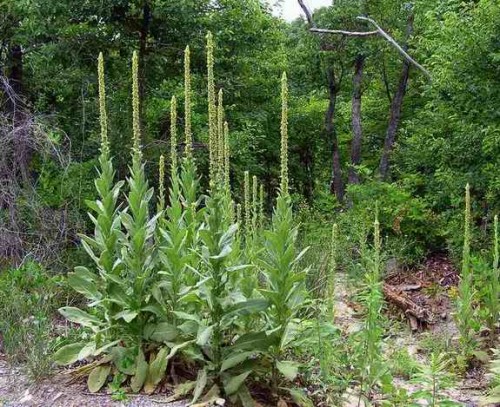
Common Mullein
Common Mullein is a noxious weed that is normally found in open areas of disturbed dirt. Common mullein is identified by tall yellow flower spikes and soft looking furry leaves. These spikes can grow up to 10 ft tall. Its seeds can survive almost any condition and last around 100 years. The rosettes are small, furry looking and are one of the easier weeds to spot at such a young age.
Spotted Knapweed
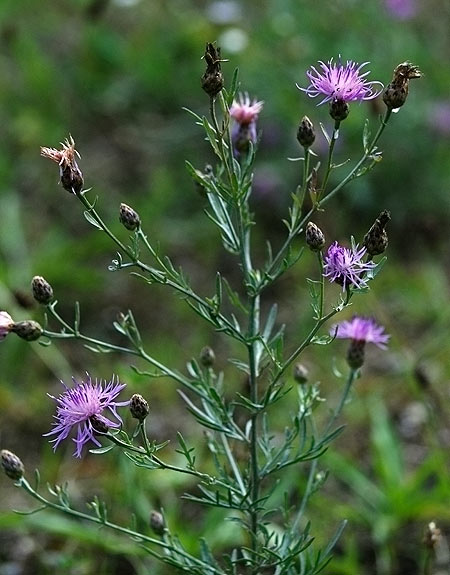
Spotted Knapweed
Spotted Knapweed is the most common type of knapweed in Teton County along with Russian knapweed and meadow knapweed. It has a high seed production, making it hard to eradicate and is also less likely to be chosen by herbivores as a food option. One easy way to identify this weed is to look down the stalk of the plant at the leaves. Knapweed leaves form an x when looking down the stalk.
Canada Thistle

Canada Thistle
Canada thistle is the most common type of thistle in Teton County and is difficult to control due to its extensive root system that allows it to recover from eradication attempts. The plant begins to flower in late spring/early summer and can contain 1,000-1,500 seeds per flowering. Canada thistle is frequently found in areas of disturbed earth and reduces the amount of forage consumption in pastures. It’s most common in crops, pastures, rangeland, roadsides, and ditch banks.
Musk Thistle
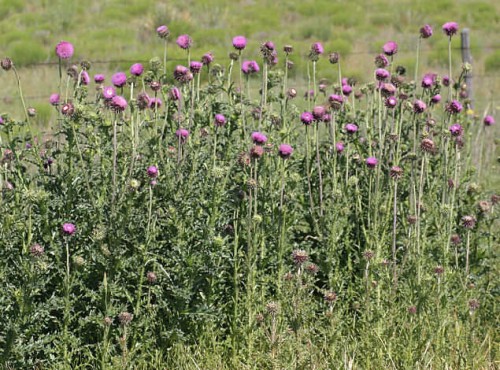
Musk Thistle
Musk thistle is another extremely common noxious weed in Teton County. Musk thistle occurs first in disturbed areas in temperate regions and is not known to have a specific climate requirement. Musk thistle is most often described as occurring on disturbed sites and waste areas, and along roadsides. It will also occur on rangelands, pastures, open woodlands, and fertile lowlands. However, musk thistle does not grow well in excessively wet, dry or shady conditions.
Oxeye Daisy
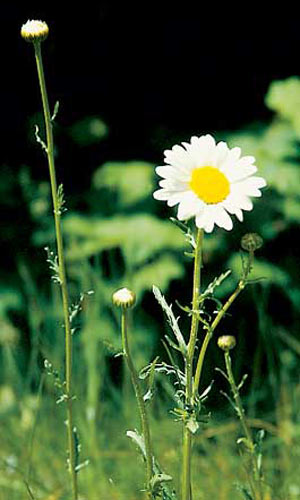
Oxeye Daisy
The Oxeye Daisy is a beautiful flower but an incredibly invasive noxious weed. It is a short-lived perennial that crowds out other crops in pastures and rangelands. Sheep, goats and horses eat the daisy, but cows and pigs do not like it. It is common in areas of disturbed earth and is resistant to many herbicides.
Dalmatian Toadflax
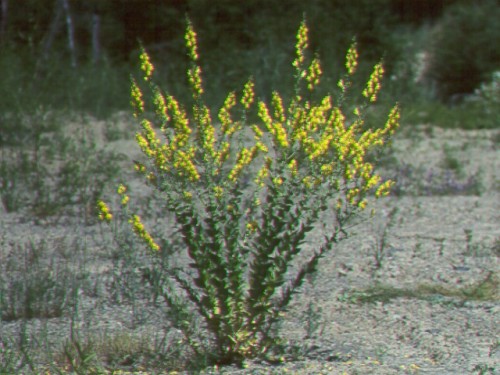
Dalmatian Toadflax
Dalmatian toadflax is another common noxious weed in Teton County. Dalmatian toadflax prefers sunny areas with well-drained often coarse-textured soils. These areas can include roadsides, pastures, residential areas, cemeteries, gravel pits, and waste areas. It is a short-lived perennial that grows up to 4 feet tall. Both leaves and stems are a waxy, bluish-green. Flowering occurs from early summer to early fall.
The noxious weeds described here are some of the most common you will see in our area. Sometimes they are big enough and can be spotted driving by, and sometimes you need to slow down and take a closer look to find them. Feel free to call the Tree and Landscape Company for your noxious weed control needs!!! We specialize in completing all paperwork required for Teton County’s Cost Share Program and do all the leg work so you get reimbursed ASAP. Our noxious weed experts will be able to identify the proper way to get your property weed free in no time!!!
Written by Robert Mrdutt


